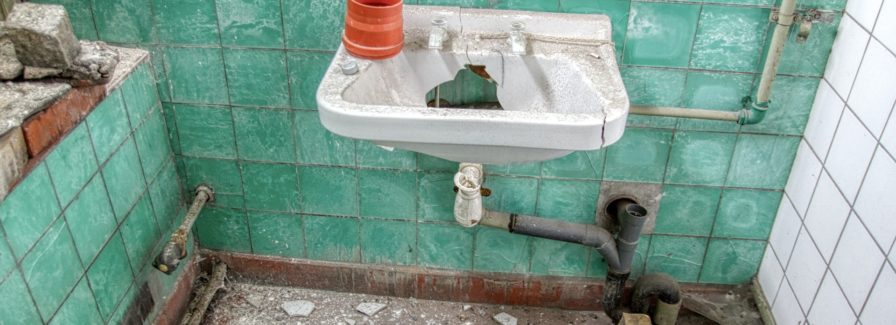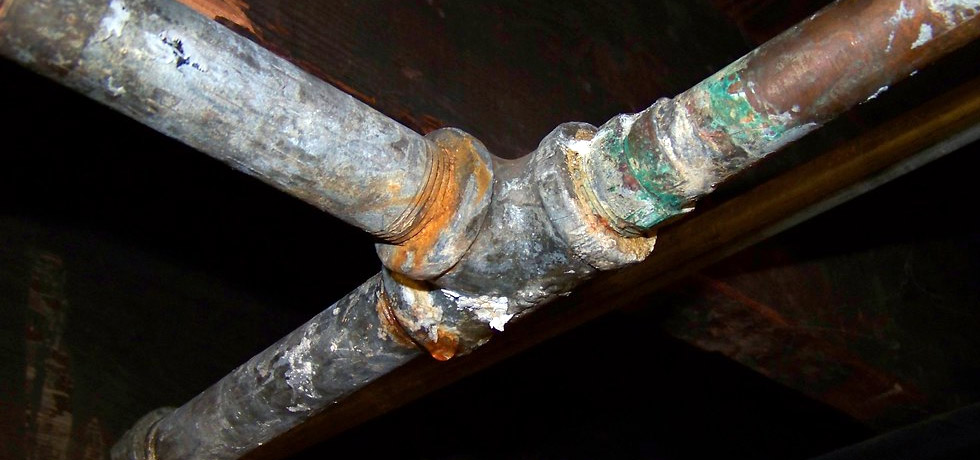Tackling Plumbing Issues in Older Homes: Professional Tips
Tackling Plumbing Issues in Older Homes: Professional Tips
Blog Article
They are making a few good observations regarding Plumbing Issues in Older Properties and How to Fix Them as a whole in this content below.

Older homes typically come with beauty, personality, and history, yet they can likewise bring a host of pipes issues. Whether you're managing aging pipelines, low tide pressure, or leakages, knowing how to resolve these common problems is critical to preserving a secure and practical home. In this overview, we'll explore the normal plumbing difficulties faced by older homes and supply sensible solutions to maintain your plumbing in top form.
Comprehending Usual Plumbing Issues
Aging Pipelines
One of the most usual issues in older homes is maturing pipes. Depending on the age in which your home was constructed, the pipes could be made from materials that have weakened with time, such as galvanized steel, cast iron, or perhaps lead. These materials can wear away, become breakable, or establish leakages, leading to water damages and prospective carcinogen.
Water Top Quality Testing
Older pipelines can influence the quality of your water. Conduct a water quality examination to look for contaminants such as lead, rust, or various other contaminations that may be introduced by aging pipelines.
Solutions for Usual Plumbing Issues
Replacing Aging Pipelines
If your home has old, wearing away pipelines, consider replacing them with contemporary products like copper or PEX. This can be a substantial investment, but it will stop future problems and improve the safety and security and reliability of your plumbing system.
Taking Care Of Low Tide Stress
To fix low water pressure, begin by cleaning or replacing old fixtures and removing mineral buildup in the pipes. If the issue continues, it might be needed to replace sections of corroded pipes.
Repairing and Replacing Leaking Pipes
For small leakages, you can utilize pipeline clamps or epoxy putty as a momentary solution. Nonetheless, it's ideal to change dripping pipes totally to avoid further damages.
Updating Components
Updating old components to modern-day, water-efficient versions can boost your home's pipes efficiency and minimize water consumption. Seek components with the WaterSense tag for the very best effectiveness.
Taking Care Of Pipe Corrosion
If your pipes are rusted, changing them with corrosion-resistant materials like copper, PVC, or PEX is the best remedy. Regular assessments and water high quality maintenance can help protect against better deterioration.
Low Water Pressure
If you're experiencing low tide pressure, maybe as a result of natural resources, rust inside the pipes, or old components that are no more working efficiently. This can be a major aggravation, particularly in areas like showers and sinks.
Dripping Pipes
Leakages are one more frequent concern in older homes, commonly triggered by corroded or damaged pipes. Even tiny leakages can lead to substantial water damage, mold growth, and boosted water bills otherwise attended to promptly.
Obsolete Fixtures
Obsolete plumbing components such as faucets, toilets, and showerheads not just look old but may additionally be less reliable, susceptible to leaks, or inappropriate with modern pipes standards.
Pipe Deterioration
Rust is an usual issue in older pipelines, especially those made from galvanized steel or actors iron. Corroded pipes can limit water flow, trigger staining, and ultimately bring about leaks or pipe ruptureds.
Evaluating the Problem of Your Plumbing
Examining Noticeable Pipes
Begin by checking any visible pipelines in your home, such as those in basements, crawl spaces, or under sinks. Seek signs of corrosion, leaks, or corrosion, which can indicate underlying problems.
Looking for Leaks
Check for leakages by evaluating areas around faucets, bathrooms, and under sinks. You can additionally monitor your water meter before and after a duration of no water utilize to detect concealed leakages.
When to Call a Specialist
While some plumbing problems can be managed with do it yourself solutions, there are times when it's finest to call in an expert. If you're taking care of significant leakages, extensive rust, or are uncertain regarding the problem of your pipelines, a licensed plumbing can supply experienced evaluation and fixing.
Preventive Upkeep Tips
Normal Inspections
Frequently check your pipes system for indications of wear and tear. Catching problems early can avoid expensive repair services down the line.
Water Stress Guideline
Guarantee your water pressure is within the recommended range to avoid worrying your pipes and fixtures. A plumbing can set up a pressure regulator if needed.
Water Quality Maintenance
Mount water filters or conditioners if your water top quality is poor. This can safeguard your pipes and fixtures from damages brought on by tough water or impurities.
Positive Pipe Replacement
If your home has older pipelines, think about positive replacement before major problems arise. This can save you from emergency repairs and water damage.
Conclusion
Managing plumbing issues in older homes requires a mix of caution, precautionary maintenance, and prompt upgrades. By recognizing the common obstacles and recognizing when to seek professional aid, you can guarantee your plumbing system remains functional and dependable for years ahead.
Common Plumbing Problems in Older Homes
Older homes have a ton of character from the antique brass faucets, clawfoot tubs, and colorful tile to the Dutch doors, transom windows, and archways, there s a lot to love. Unfortunately, that character often includes old plumbing that s past its prime and isn t fit to support modern appliances.
If you own an older home and are suspicious about strange noises (ghosts?), smells, leaks, or frequent clogs in your plumbing, it's possible that your home s old age is to blame.
Learn more about the most common old house plumbing problems, and what can be done to fix them!
What Are the Most Common Plumbing Problems in Old Houses?
Old, corroded piping. Most older pipes are made of material that corrodes and rusts more easily. Even if over the years some of that piping was replaced with better material, the rest may be damaged or repaired with lower-quality material. Though expensive, it may be the best option to re-pipe your plumbing especially if there s rust or lead in your water. Slow drains. This could be the result of many issues, but most likely because of pipe bellies. These are sags in your drainpipes that happen as your home settles and shifts downward over time, putting pressure on your pipes and creating negative slopes. This can restrict water from flowing correctly through them and result in slow drains. Frequent clogging. As you might expect, pipe bellies can also lead to frequent clogging. Another reason for clogging could be due to buildup over time, or blockages from sediment and root growth. Scheduling a drain inspection and drain unclogging service can eliminate this issue. Damaged or failing sewer lines. Old homes are more likely to have foundational shifts and tree root overgrowth. This can put a lot of pressure on and in your sewer lines, leading to damage. Another common reason for failed sewer lines is because of modern appliance upgrades. Newer appliances put more strain on sewer lines, and if your old pipes aren t equipped to handle this, it can result in damage. If you have any wastewater backup, slow drains, or soft spots in your yard, you may need sewer line replacement. Worn or outdated fixtures. Plumbing fixtures old or new aren t built to last forever. Even if your fixtures seem like they re working well, it s best to check the wear on any internal parts. Minor wear and tear over time can lead to more costly leaks and plumbing issues. Our experts can perform a plumbing inspection for any part of your home s plumbing. Improper installations or repairs. Whether your plumbing was installed a hundred years ago, installed incorrectly, repaired incorrectly, or repaired with outdated materials, this can affect the long-term stability of your plumbing. In older homes especially, having your plumbing inspected is vital to preventing damage. What Are Old Plumbing Pipes Made Of?
Galvanized steel. Most often used between the 1930s and the 1980s, this piping material was discovered later in the 1990s to be prone to rust and corrosion, releasing lead into the water, which is dangerous to consume. Copper. Most homes built around the 1960s are likely to have copper piping. Unlike galvanized steel, copper is one of the most durable materials for plumbing pipes. The issue with this material is the risk of lead, which could be present in the piping itself or the solder applied to the joints and fittings. PVC. This material is still used today and was often used in older homes where piping was replaced because it was easy and inexpensive to install. PVC is also very durable, lead-free, resistant to rust and corrosion, and handles high water pressure well. The downside is that hot water can make it warp. How to Fix Plumbing Problems in Old Homes
Have your plumbing inspected. Before you begin or schedule any type of repair, schedule a plumbing inspection. An expert will be able to properly identify all the issues in your plumbing and the best solution to avoid further damage. Get your plumbing repaired or replaced as needed. Depending on the issues found with your plumbing, you may need minor repairs or larger replacements. Make sure these issues are addressed before you tackle any smaller issues. Remove any clogs or buildup. It s likely your old pipes are clogged with debris, mineral buildup, hair, tree roots, and more. Having your drainpipes cleaned will improve overall drainage and help prevent future leaks. Replace old fixtures. Before replacing any fixtures, check with your local plumber first. Not only can new fixtures strain your old plumbing pipes, but installing them incorrectly can lead to costly damage.

Hopefully you enjoyed our post on Plumbing Problems In Old Homes. Thank you so much for taking time to read our article. Do you know anybody else who is truly interested in the subject? Be sure promote it. We take joy in your readership.
Request Your Service Report this page